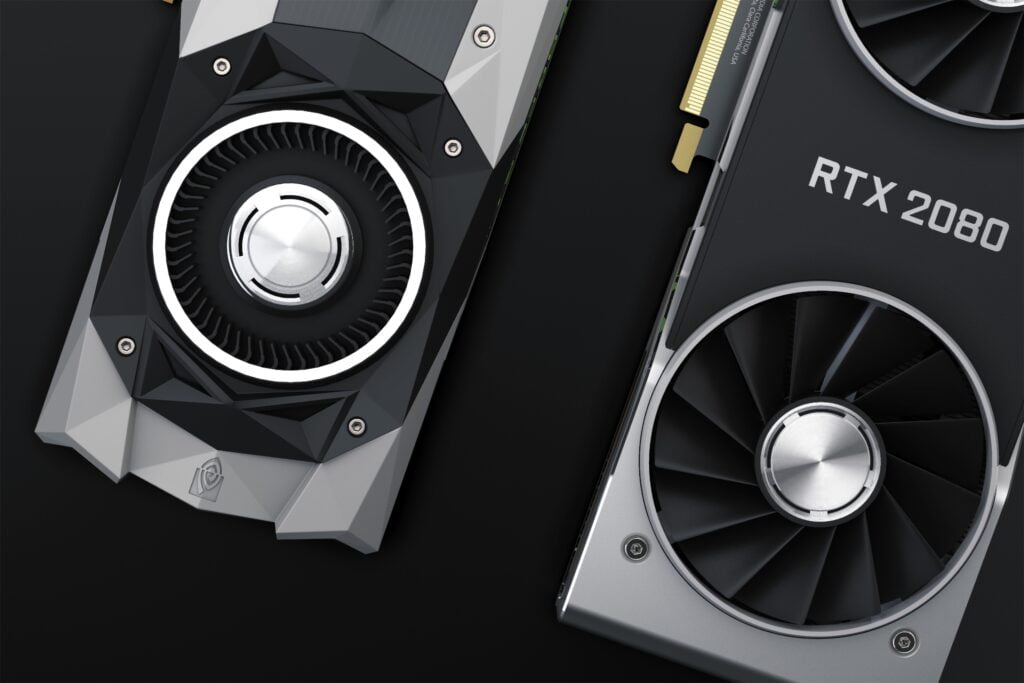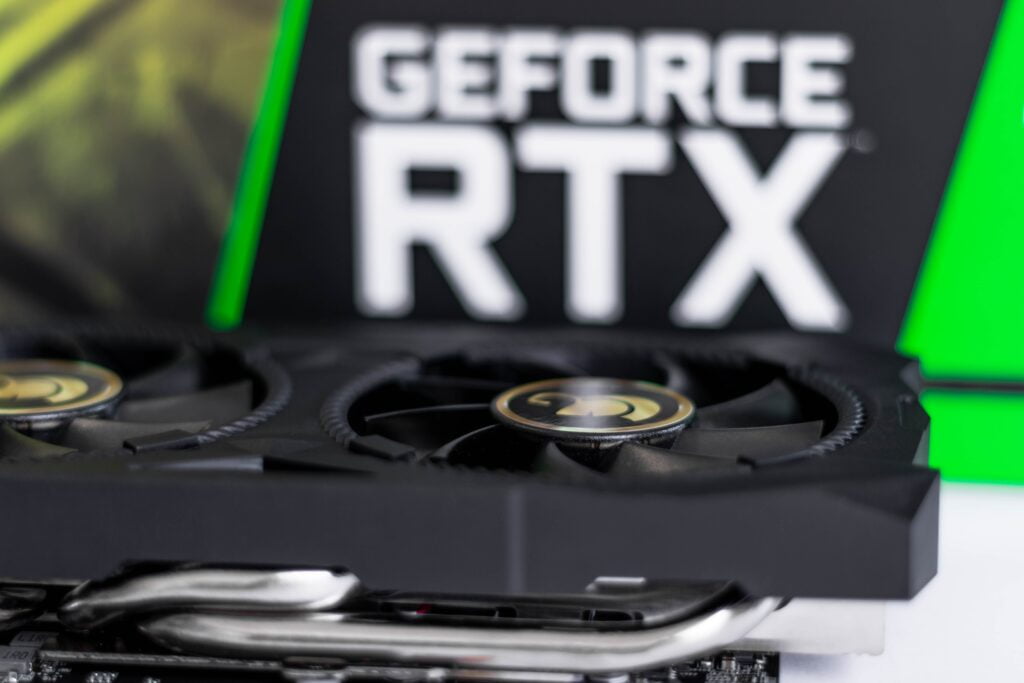When it comes to gaming, the graphics card is a crucial component that can greatly impact your gaming experience.
Whether you are going to build a new gaming PC or just want to upgrade your graphics processing unit for your old gaming setup, you definitely might’ve come across GTX and RTX graphics cards if you’ve opted to go for NVIDIA Graphics.
The GTX series has long been a favourite among gamers for its reliability and performance. On the other hand, the RTX series boasts the latest technology, including ray tracing capabilities.
With these two options on the table, it’s critical to understand their strengths and weaknesses before making a decision.
GTX vs RTX
So today, I will compare and take a deep dive into NVIDIA’s RTX and GTX Graphics Cards, and compare their key differences, price points, and performance variations.
Whether you prioritize raw power or cutting-edge technology, we’ll help you determine which graphics card is the best fit for your gaming performance.
Quick Summary
- RTX stands for Ray Tracing Texel eXtreme. It is a set of NVIDIA technologies that enables real-time ray tracing in games and other applications. Ray tracing is a technique for simulating the behaviour of light in the actual environment, resulting in more realistic shadows, reflections, and refractions.
- GTX stands for Giga Texel Shader eXtreme. It is a series of NVIDIA graphics processing units (GPUs). GTX cards are intended mostly for basic-level gaming and other mid-level performance applications.
- RTX vs. GTX Key Differences
- Support for ray tracing: RTX cards support ray tracing, but GTX cards do not.
- DLSS support: DLSS is supported by RTX GPUs but not by GTX cards.
- Tensor cores: Tensor cores are present in RTX cards but not in GTX cards.
- Price: RTX graphics cards are often more costly than GTX graphics cards.
- If you want the highest possible graphics performance and to try out the latest features, RTX is the way to go. However, if you are on a tight budget or do not want the most recent features, GTX may be a better choice.
What is RTX?
NVIDIA, under its GeForce Brand, has two lineups of Graphics Cards. The most recent releases are the Nvidia GeForce RTX variants.
RTX is an abbreviation for “Ray Tracing Texel eXtreme”. It is a set of NVIDIA technologies that enables real-time ray tracing in games and other applications. Ray tracing is a technique that models how light behaves in the actual environment, resulting in more realistic shadows, reflections, and refractions.
These lineups also contain specialized ray-tracing technology, which allows them to produce ray-traced scenes at much greater framerates than standard graphics cards.
RTX GPUs also enable DLSS (Deep Learning Super Sampling), an AI-powered technique that can increase gaming speed by upscaling the resolution without losing visual quality.
Although RTX is still a new technology, it is quickly becoming commonplace for high-end gaming. Ray tracing is already supported in many of the most recent games, and the list of titles supported is projected to rise in the future.
How Does RTX Enable Ray Tracing?
Ray tracing is a technique for simulating how light behaves in real life. It accomplishes this by following the course of light rays as they go through a scene and then calculating how they interact with the scene’s objects. As a result, shadows, reflections, and refractions appear more lifelike.
RTX cards have dedicated hardware for ray tracing, called RT cores. These ray tracing cores have been particularly built to speed up the ray tracing process.
As a result, RTX GPUs can render ray-traced scenes at significantly higher framerates than standard graphics cards.
For instance, Imagine you are trying to find your way through a dark room. You can use a flashlight to trace the path of light as it travels through the room. This will help you to see where you are going and avoid obstacles.
RTX cards are like the flashlight in this case. They use their RT cores to trace the path of light rays as they travel through a scene. This allows them to render ray-traced scenes that are more realistic and immersive than traditional graphics.

What is GTX?
GTX stands for Giga Texel Shader eXtreme. It is a series of graphics processing units (GPUs) manufactured by NVIDIA. GTX cards are designed for gaming and other high-performance applications.
The Nvidia GeForce GTX 16 series, which uses the Turing architecture, is the most recent GTX card range. These are intended for budget-conscious gamers and provide good value for money.
The Previous Generation of the GTX card range was the GTX 10 series, which used the Pascal architecture. These cards are still suitable for gaming, although they are not as strong as RTX GPUs.
As they lack specific ray-tracing hardware, they cannot render ray-traced scenes at the same framerates as RTX cards. They may, however, still generate spectacular images, particularly at reduced resolutions.
How Does GTSE Affect Performance?
GTSE (Global Task Scheduling Engine) is a new NVIDIA graphics card technology initially in the RTX 30 series. As its name suggests, GTSE aims to increase game and application performance by better scheduling work among the various components of the graphics card.
GTSE does so through the use of a novel algorithm that takes into account the application’s workload. This enables GTSE to plan jobs more effectively, potentially resulting in considerable performance benefits.
for example, It can be used to boost the performance of ray tracing programs. Ray tracing is a computationally expensive technique, and GTSE can aid in speeding up the rendering of ray-traced scenes.
GTSE can also be used to improve the performance of other applications, such as video editing and 3D rendering. In general, GTSE can provide a significant performance boost for any application that is demanding on the graphics card.
RTX vs GTX – Key Differences between the Latest Lineup of GPUs
| Feature | RTX 30 series | GTX 16 series |
| Architecture | Ampere | Turing |
| Transistor count | Up to 28.3 billion | Up to 10.7 billion |
| CUDA cores | Up to 10,240 | Up to 8,704 |
| Base clock speed | Up to 1.78 GHz | Up to 1.73 GHz |
| Boost clock speed | Up to 2.9 GHz | Up to 2.15 GHz |
| Memory bandwidth | Up to 640 GB/s | Up to 480 GB/s |
| Memory type | GDDR6X | GDDR5, GDDR5X |
| Ray tracing support | Yes | No |
| DLSS support | Yes | No |
| VR Ready | Yes | Yes |
Also, let’s look at some of the Benchmark Tests carried out for different GPUs from UserBenchmark:
| Card | Overall | Multi-Core | Single-Core |
| RTX 3080 | 97.4% | 95.3% | 98.8% |
| RTX 3070 | 93.8% | 93.1% | 94.5% |
| RTX 3060 Ti | 89.8% | 91.2% | 88.4% |
| GTX 1660 Ti | 83.8% | 85.2% | 82.5% |
| GTX 1660 Super | 81.3% | 82.6% | 79.9% |
As can be seen, the RTX 30 series routinely beats the GTX 16 series across the board. The best-performing card in both series is the RTX 3080, followed by the RTX 3070 and RTX 3060 Ti. The GTX 1660 Ti and GTX 1660 Super are both excellent cards, but they lack the power of the RTX cards.
The RTX 30 series outperforms the GTX 16 series for several reasons. For starters, the RTX 30 series employs an updated architecture that is more efficient and capable of handling more complex tasks. Second, the RTX 30 series features more CUDA cores, allowing it to process more data at once. Third, the RTX 30 series has faster clock rates, which means it can process instructions much faster.
Why You Should Consider GTX Over RTX?
There are a few reasons why someone would consider getting a GTX card instead of the RTX. For starters, GTX cards are often less expensive than RTX cards. Second, the GTX cards do not require a high-end power supply, which might reduce the overall cost of the system. Third, the GTX cards lack the capabilities like ray tracing and DLSS that the RTX cards do. These features, however, are not currently extensively supported by games, thus they may not be important for everyone.
Verdict: RTX vs GTX – Which Is Right for You?
NVIDIA’s RTX series is a newer and more powerful generation of graphics cards. It has several benefits over the GTX series, including ray tracing and DLSS support. It is, however, more costly.
The GTX series is NVIDIA’s previous generation of graphics cards. Although it does not support ray tracing or DLSS, it is a very competent family of GPUs. It is also less expensive than the RTX series.
So, which one is right for you? If you want the best performance and features available, the RTX series is the way to go. However, if you are on a tight budget or do not want the most recent features, the GTX series may be a better option.
RTX vs GTX: Frequently Asked Questions
Is RTX 3050 better than GTX 1650?
Yes, the RTX 3050 outperforms the GTX 1650. It has more CUDA cores, faster clock rates, and increased memory bandwidth. It also supports ray tracing and DLSS, which are new technologies that can increase the visual quality of games and other applications dramatically.
Why Did GTX become RTX?
In 2018, NVIDIA launched the RTX series to distinguish their new range of graphics cards from the older GTX series. The RTX series features ray tracing and DLSS, two new technologies that may dramatically increase gaming and application graphics quality.
Is RTX worth it?
If you want the highest possible graphics performance and want to try out the latest features, RTX is a must-have. However, if you are on a tight budget or do not want the most up-to-date features, RTX may not be necessary.
Is a GTX 1650 better than an RTX 2060?
No, the GTX 1650 is not better than the RTX 2060. The RTX 2060 has more CUDA cores, higher clock speeds, and more memory bandwidth.

Which RTX is best?
If you want the highest performance possible, the RTX 3080 is the best card on the market. If you’re on a tight budget, the RTX 3050 is a fantastic choice.
Can I change GTX to RTX on a laptop?
No, you cannot upgrade from GTX to RTX on a laptop. The RTX series is a new generation of graphics cards that necessitates the development of a new architecture. Laptops with GTX graphics cards are unable to be updated to RTX graphics cards.
References
01. https://en.wikipedia.org/wiki/Nvidia_RTX
02. https://en.wikipedia.org/wiki/List_of_Nvidia_graphics_processing_units








